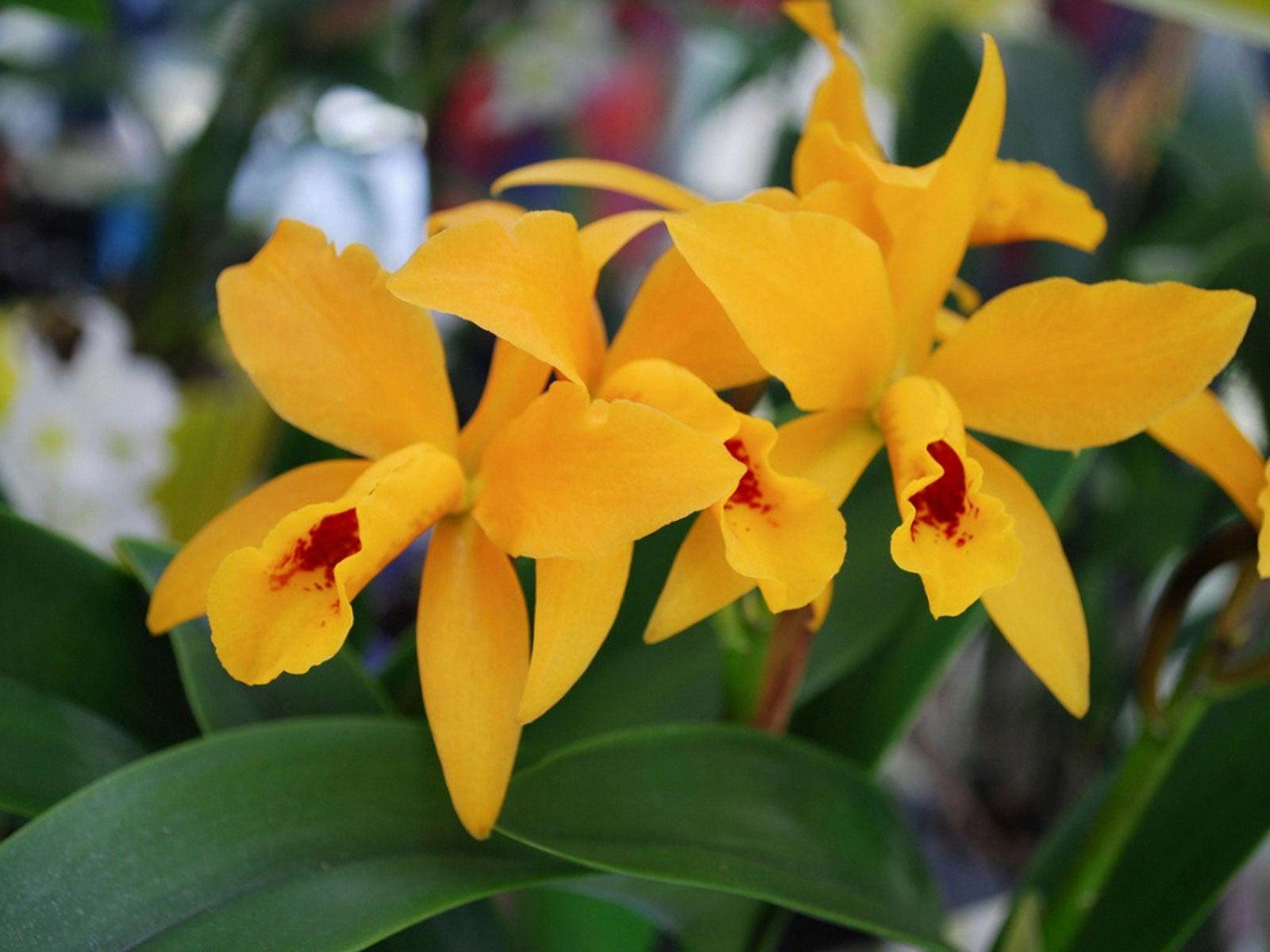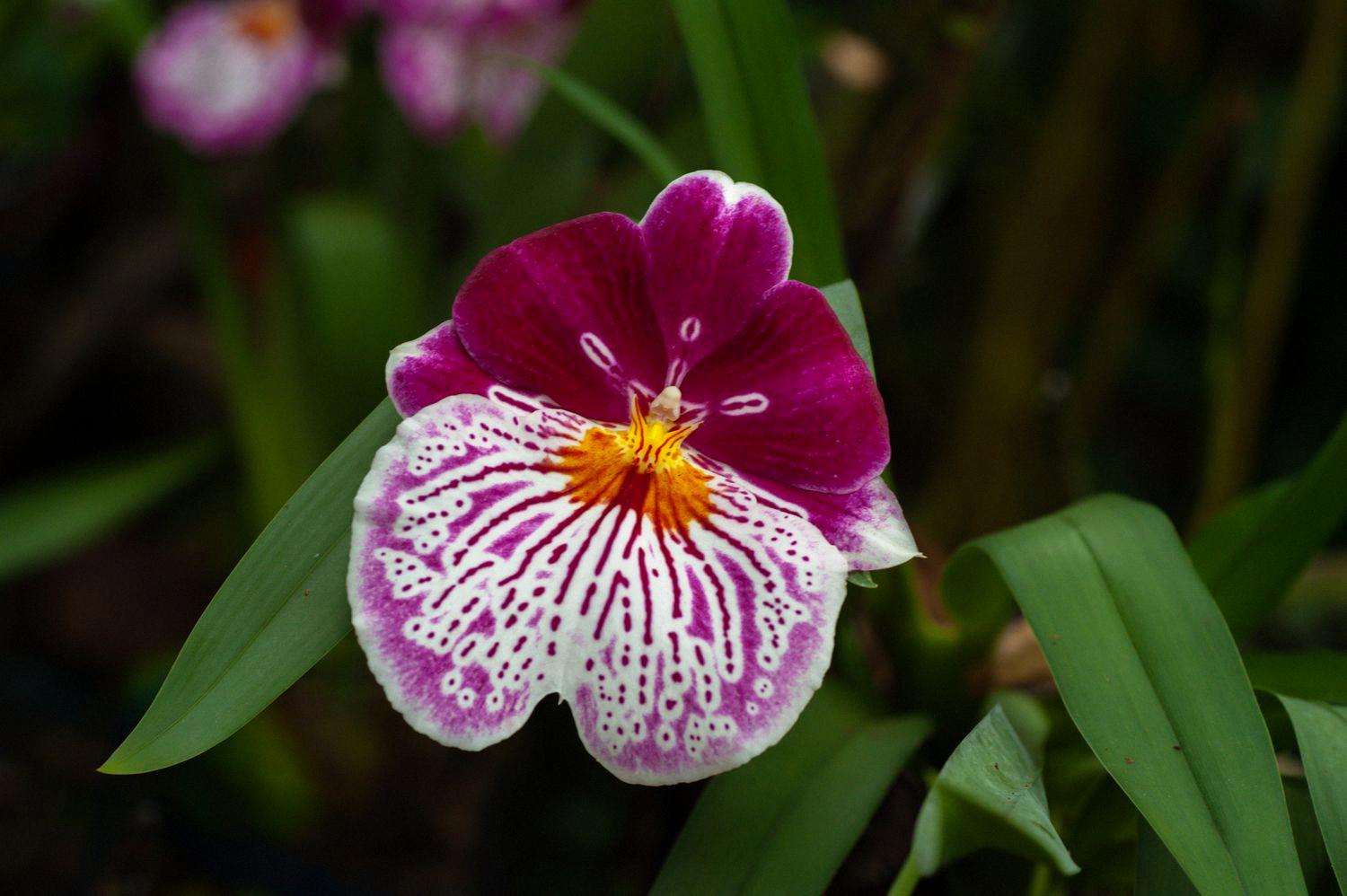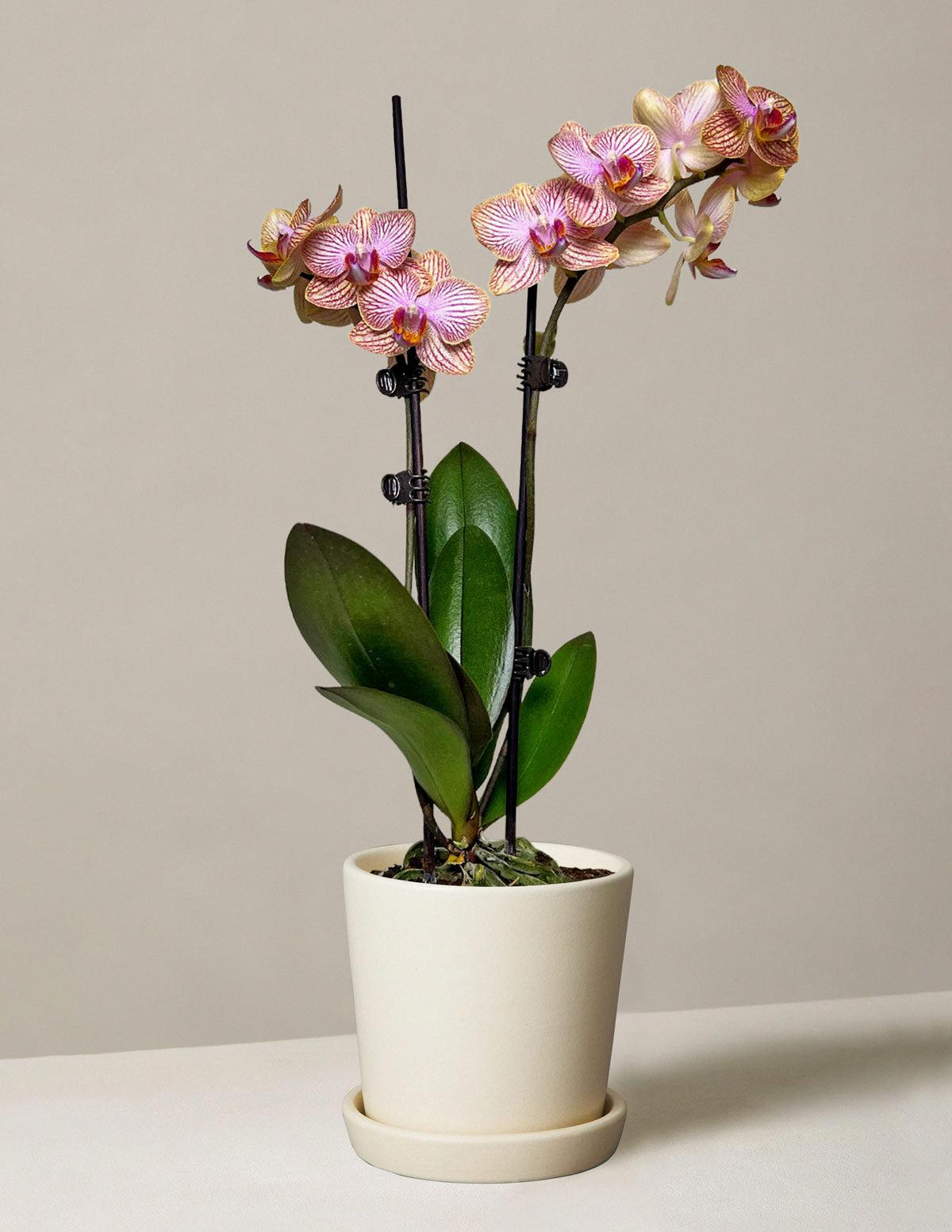Orchids are a popular houseplant choice due to their stunning blooms and unique appearance. However, many people are unsure of how to properly care for these tropical plants, particularly when it comes to humidity levels. One question that arises frequently is whether or not orchids enjoy being misted.
In short, the answer is yes – orchids generally do like to be misted. This is because they are native to tropical climates and thrive in high humidity levels. However, misting alone may not be enough to provide your orchid with the necessary moisture it needs to grow and bloom properly.
To understand why misting is beneficial, it’s important to first understand the natural habitat of orchids. Most orchids are epiphytes, which means that they grow on other plants rather than in soil. In their natural habitats, they receive moisture from the air around them in addition to occasional rain showers. This means that they require high humidity levels to survive.
When growing orchids indoors, it can be difficult to recreate the high humidity levels they are accustomed to. This is where misting comes in. By misting your orchid regularly, you can help to increase the humidity levels in the air around it. This can be particularly beneficial during the winter months when indoor heating can cause the air to become dry.
However, misting alone may not provide your orchid with all the moisture it needs. It’s important to also water your orchid properly to ensure that it is receiving enough water. When watering your orchid, it’s important to water the roots rather than pouring water over the leaves or blooms. You can do this by placing your orchid in the sink and watering it thoroughly, allowing the excess water to drain out.
In addition to misting and watering, thee are other ways to increase the humidity levels around your orchid. One option is to use a humidifier in the room where your orchid is located. You can also place a tray of water near your orchid, which will evaporate and increase the humidity levels in the air.
Misting can be a beneficial part of caring for your orchid. However, it’s important to also water your orchid properly and take other steps to increase humidity levels in the air around it. With the right care, your orchid can thrive and produce stunning blooms for years to come.
The Benefits of Mist Spraying an Orchid
Absolutely! Orchids are known for their love of humidity, and misting them with a spray bottle is an easy way to recreate the moist environment they thrive in. These tropical plants are accustomed to high levels of humidity, whch can be difficult to maintain in most indoor environments. Misting your orchid is a great way to increase the humidity around the plant, as the water droplets will evaporate and create a small microclimate around the plant. Not only will this help keep the orchid healthy, but it can also prevent issues like dry, crispy leaves or root rot. It’s important to use room temperature water when misting your orchid, and to avoid getting water on the flowers or buds, as this can cause damage or promote fungal growth. Overall, misting your orchid is a great way to keep it happy and healthy, and it only takes a few minutes a day!

Source: gardeningknowhow.com
The Best Way to Water an Orchid
To water an orchid, the best way is to place it in the kitchen sink and use lukewarm water. It is important to avoid uing salt softened or distilled water. Slowly pour water over the plant for about 15 seconds, making sure to thoroughly wet the media. After watering, allow the plant to drain for about 15 minutes. It may appear dry, but this is normal and means that the orchid has had enough water. Overwatering can cause root rot, so it is important to not water the plant too frequently. The frequency of watering will depend on the type of orchid, the environment it is in, and the season. As a general rule, it is better to underwater than overwater an orchid. Observing the plant for signs of dryness, such as wrinkled leaves or a dry potting mix, can help determine when it needs to be watered.
Misting Orchids: How to Water Them
When misting orchids, it is important to use a fine sprayer or mister and spray the plant gently until the moss is moist but not soaking wet. Misting should only be done once or twice a day, depending on the humidity level of your home. It is important to avoid misting the leaves directly, as this can cause water to pool and potentially lead to fungal growth. Additionally, misting should not be the only method of watering your orchid, as it does not provide enough water for the plant to thrive. Instead, misting can be used to supplement regular watering and help increase humidity levels arund the plant.
Do Orchids Prefer Wet or Dry Conditions?
Orchids prefer to be slightly dry between watering. Unlike other houseplants, they do not like to be constantly wet or have water poured directly over their crown. It is important to allow the orchid’s potting medium to dry out slightly before giving it a thorough watering. This helps to prevent root rot and other issues that can occur when there is too much moisture around the roots. Additionally, it is a good idea to water orchids in the morning so that any excess water can evaporate throughout the day. Overall, providing adequate drainage and allowing the orchid to dry out slightly between watering is key to keeping it healthy and happy.
The Effects of Letting Orchids Sit in Water
No, you shuld never let orchids sit in water. Orchids require a good soak when watering, but they cannot tolerate sitting in water. Allowing the water to drain out completely after watering is crucial to prevent waterlogging and root rot. Uneven watering can also result in shallow or uneven root growth, which can hinder the plant’s overall health. It is recommended to check the weight of the container after watering, as a heavy pot indicates that there is still sufficient water in the potting mix, while a lighter pot indicates that it is time to water again. Therefore, it is essential to provide proper drainage and avoid letting orchids sit in water to maintain healthy root growth and overall plant health.

The Best Place to Mist an Orchid
To mist your orchid, you should spray the leaves and roots in the morning. It’s important to hold the nozzle about 1 foot away from the plant and spray around all sides of the orchid until the leaves and roots are covered with a fine mist. However, you should avoid saturating the leaves as it can lead to rotting. To maintain the optimal humidity level for your orchid, you should repeat this process each morning as needed. By following these steps, you can ensure that your orchid stays healthy and hydrated.
How Long Can Orchids Survive Without Water?
Orchids are unique and delicate plants that require specific care to thrive. One of the most important aspects of taking care of orchids is watering them correctly. So, how long can orchids go without water? The short answer is that orchids should not go longer than two to three weeks without water. In the winter, orchids generally need watering once a week, while in the warmer months, they may need watering tice a week. If an orchid goes too long without water, it will start to show signs of distress, such as yellowing leaves or drooping flowers. Ultimately, neglecting to water your orchid can lead to its death. Therefore, it is crucial to monitor your orchid’s watering needs and provide it with the appropriate amount of water at the right time to ensure its health and longevity.
The Benefits of Using Epsom Salt for Orchids
Epsom salt, also known as magnesium sulfate, can provide various benefits to orchids. According to the Epsom Salt Council, using Epsom salt on orchids can result in bushier growth, increased flower production, and higher levels of chlorophyll production. Additionally, Epsom salt has been known to deter pests, including slugs, which can be harmful to orchids. Commercial orchid growers have been supplementing their feeding regimes with Epsom salt for over a century and have reported noticeable improvements in the bud count of their orchids. Overall, the use of Epsom salt can be a beneficial addition to an orchid care routine.
Frequency of Orchid Blooms
Most orchids bloom once a year. However, the frequency of blooming can vary depending on the conditions in which the orchid is grown. If the orchid is well cared for and provided optimal growing conditions, it may bloom more often. For those who want an orchid that blooms during a specific season, it is advisable to purchase a plant that is currently in bloom during that time. Once an orchid blooms, the flowers usually remain in bloom for six to ten weeks, providing a beautiful display of color and fragrance.

Source: thespruce.com
Frequency of Mist Spraying for Orchids
If you are caring for orchids, it is important to maintain a proper level of humidity, which can be challenging in centrally heated homes since the air is often dry. One effective way to increase humidity is by misting the foliage of your orchids. Ideally, you should mist your orchids evry two to three days using tepid water. However, it is crucial to avoid spraying water on the flowers, as this can cause unsightly marks on the petals. It is also important to note that overwatering is a common mistake that can harm your orchids, so be sure to mist them in moderation and only when necessary. By following these guidelines, you can help ensure that your orchids thrive in a healthy and humid environment.
Watering Frequency for Orchids
The frequency at whih orchids need to be watered can vary depending on the species and the conditions in which they are kept. However, on average, most orchids can be watered once a week to every 10 days. It’s important to be cautious not to overwater them, as orchids require less water than most people think. In fact, orchid plants typically need much less water than the average consumer would assume. Therefore, it’s essential to monitor the soil moisture level and water only when the soil is almost dry to the touch. Overwatering can lead to root rot and other problems that can harm your orchids, so it’s best to err on the side of caution and avoid watering them too frequently.
Watering Frequency for Indoor Orchids
When it comes to watering orchids indoors, it’s important to take into account a few key factors, such as the climate conditions and the size of your orchid container. During the winter, it’s generally recommended to water your orchids once a week, while in warmer and drier weather, it’s best to water them twce a week. However, it’s important to note that the size of your orchid container can also influence how often you need to water. For instance, a 6-inch pot typically needs watering every 7 days, while a 4-inch pot may require watering every 5 to 6 days. By taking these factors into account and monitoring your orchids’ moisture levels, you can help ensure that they receive the appropriate amount of water to thrive.
Signs of Underwatering in Orchids
An underwatered orchid is easy to identify by its appearance. The most noticeable symptom is that the growth of the orchid is stunted, and it may not reach its full potential. The leaves of the orchid will start to wrinkle and have a wilted appearance. Additionally, the flowers and flower buds may drop off or not develop at all. The roots of the orchid will shrink, and turn white and papery. This is because the lack of water cases the roots to dry out and become damaged. In severe cases, the leaves may turn yellow or brown and fall off, which can ultimately lead to the death of the orchid. Therefore, it is important to monitor the watering schedule of your orchid and ensure that it is receiving the appropriate amount of water to maintain its health and appearance.

Source: thesill.com
Do Orchids Need Direct Sunlight?
No, orchids do not need direct sunlight. In fact, orchids are shade-loving plants and prefer indirect sunlight. Direct sunlight can harm them by causing their leaves to burn or scorch. It is recommended to place orchids in a location with bright, filtered light, such as near a window with sheer curtains or in a shaded area outdoors. If you do need to move your orchid to a sunnier location, it is important to acclimate it gradually by exposing it to increased light levels over several days to prevent sun damage. Overall, providing the riht amount of light is crucial for the health and growth of your orchid.
Should Orchid Roots Be Exposed?
Orchid roots are adapted to grow in a unique way, and they play a crucial role in the plant’s overall health and well-being. In general, orchid roots should not be completely covered or buried in soil, as this can lead to root rot and other problems.
Instead, orchids are typically grown in a loose, well-draining medium that allows air to circulate around the roots. This can be a mixture of materials such as bark, sphagnum moss, perlite, and peat moss.
When planting or repotting an orchid, it’s important to position the roots so that they are partially exposed to the air. This can help prevent moisture buildup and allw the roots to absorb nutrients more efficiently. However, the roots should not be completely exposed or hanging out of the pot, as this can cause them to dry out and become damaged.
In summary, while it’s important to ensure that orchid roots are not completely covered or buried in soil, they should also not be completely exposed. Finding the right balance of exposure and moisture is key to maintaining healthy, thriving orchids.
Conclusion
In conclusion, Orchids are a unique and fascinating plant that require some special care to thrive. They are a tropical plant and love humid conditions, which can be recreated through misting and proper watering techniques. It is important to water your orchid thoroughly but allow it to dry out between watering, as overwatering can case root rot. Additionally, it is best to avoid pouring water over the center of the plant, the crown, as this can also cause damage. With proper care, Orchids can bloom for several months and bring beauty to any space. So, if you’re up for the challenge, add an Orchid to your plant collection and enjoy the rewards of its exotic beauty.
